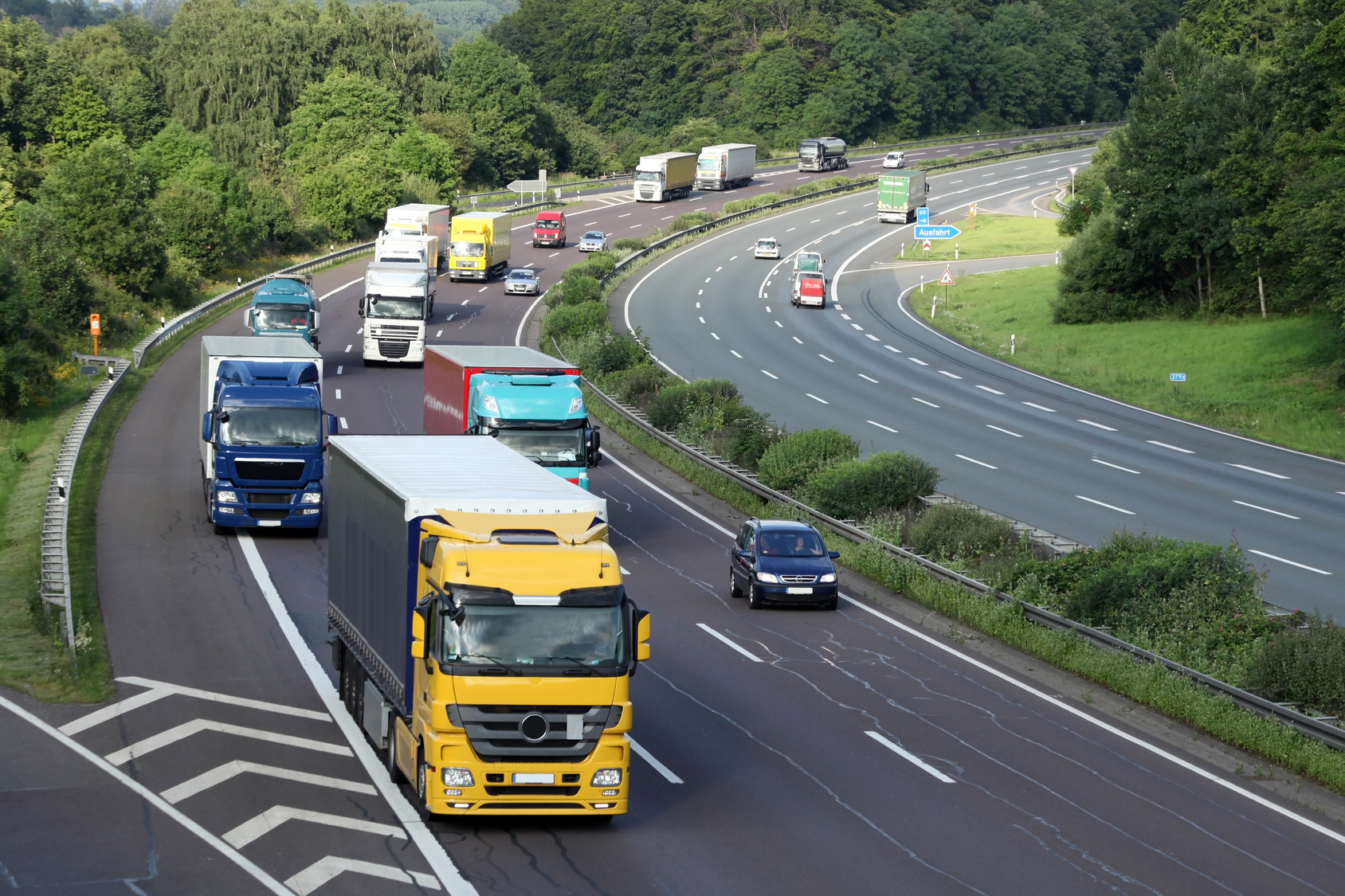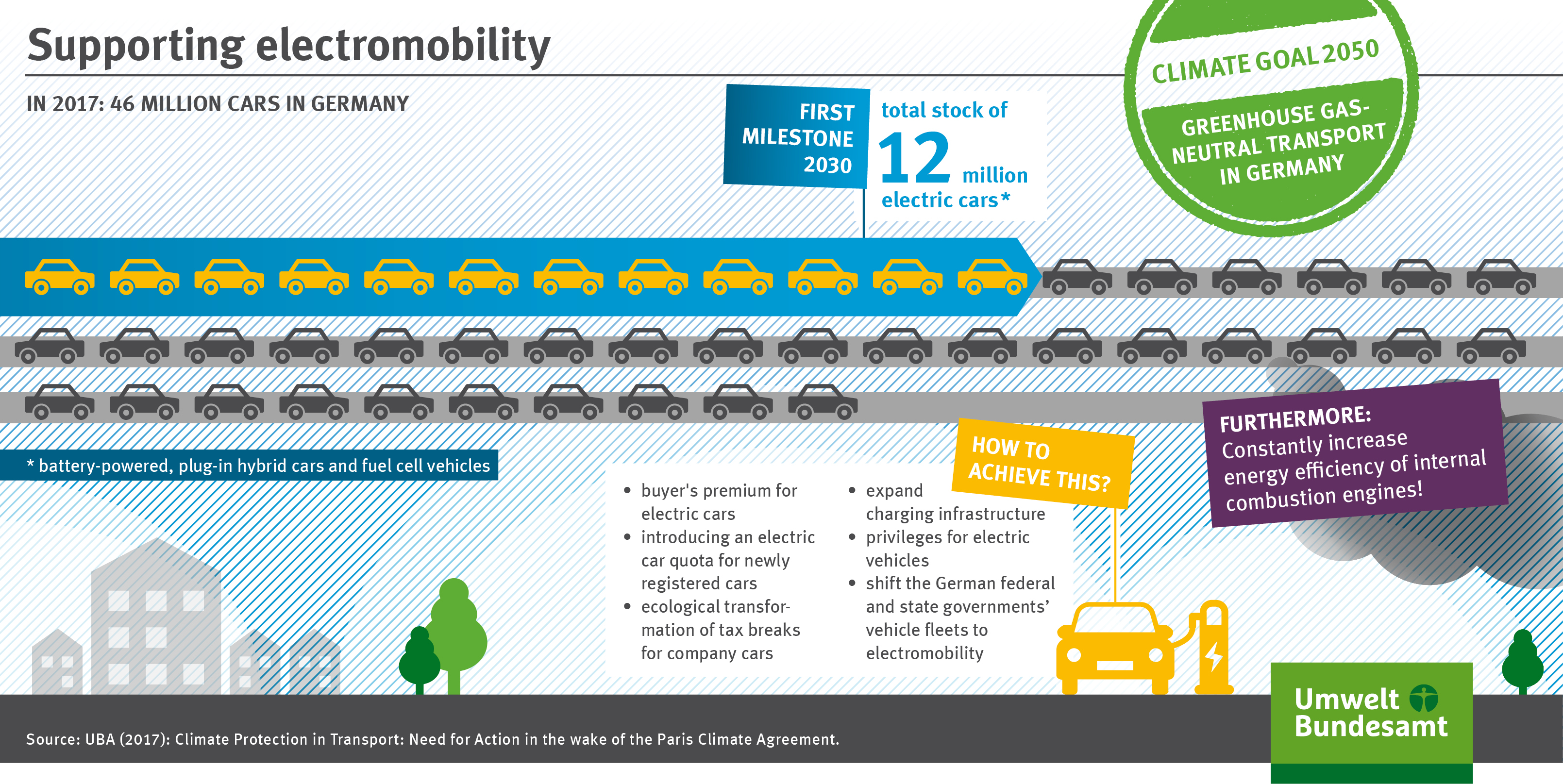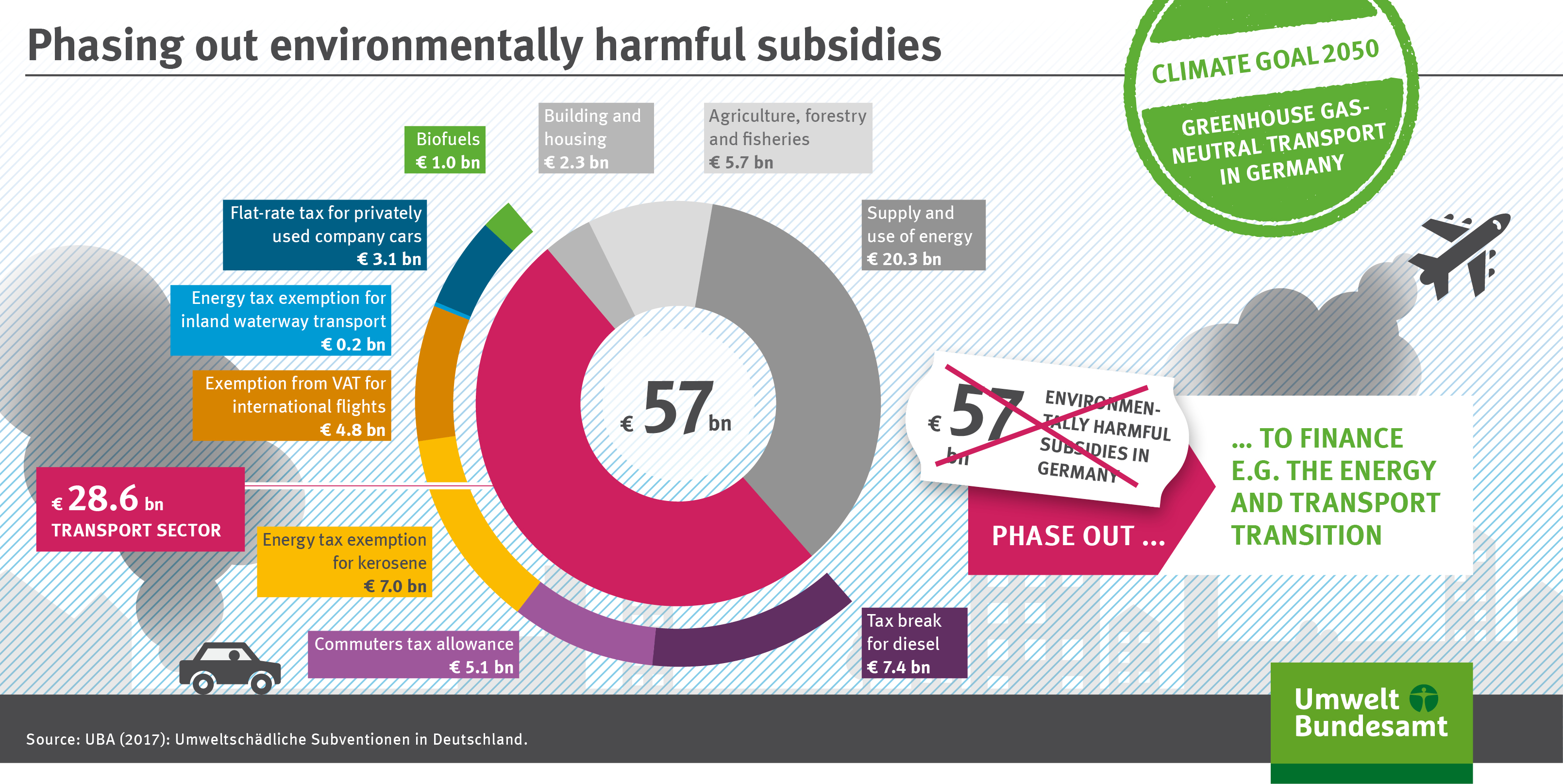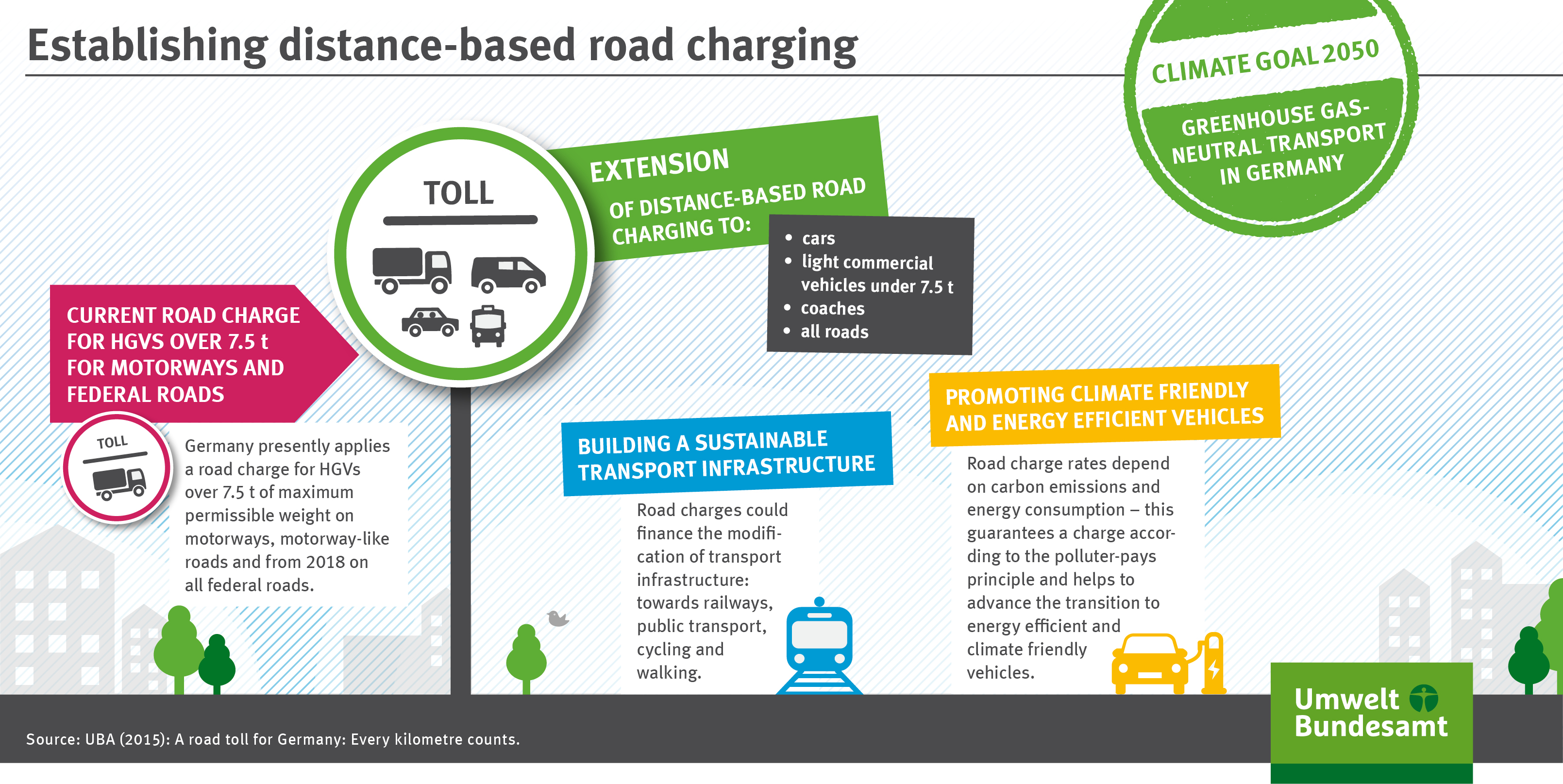Mobility and accessibility are essential for participation, economic exchange, employment and prosperity in our society. However, the current transport system is also very damaging to the environment. Traffic – transport performance in terms of passenger and tonne kilometres to be exact – has increased consistently in Germany in recent decades. Since 1960, freight transport has more than tripled, and passenger traffic has even quadrupled.
Although individual vehicles have become significantly cleaner and quieter, motorised transport still accounts for detrimental environmental impact due to emissions of greenhouse gases, air pollutants and noise as well as land use and resource consumption. As transport performance has increased, energy consumption in the transport sector in Germany has more than tripled since 1960. Currently, transport is the source of around one fifth of total greenhouse gas emissions in Germany.
How can the mobility of people and goods be maintained and secured without transport placing an excessive burden on people and the environment in the long term? This question is at the heart of sustainable mobility. In its Climate Action Plan 2050, the German government has resolved to reduce annual greenhouse gas emissions in the transport sector from the current roughly 160 million tonnes of CO2 equivalents to between 95 and 98 million tonnes in 2030. The European Commission's Green Deal for a climate-neutral Europe also aims to decarbonise the European mobility system by 2050, i.e. to make it greenhouse gas-neutral.
These political decisions must now be backed up by ambitious measures to achieve the set objectives. A comprehensive strategy in the field of transport covers the following four areas:
- Traffic avoidance,
- Modal shift to greener modes of transport, e.g. railway or shipping
- Increasing energy efficiency, and
- Use of post-fossil, greenhouse gas-neutral fuels and power.
To make the use of alternative fuels and propulsion systems in transport resource and cost efficient, it will be necessary to reduce the energy demand of the whole sector. It is therefore particularly important to avoid and shift traffic. The avoidance of traffic is often misunderstood: The primary goal is not to prevent traffic, but rather to shorten transport routes by changing settlement and production structures or to increase the capacity utilisation of vehicles. The aim is therefore more mobility with less traffic!
Sustainable transport calls for a policy mix because individual measures will not have the necessary impact. The vehicle and its drivetrain technology must not be the sole focus. An integrated approach, including non-technical measures, is the only way to achieve the climate change targets set. Above all, what is needed are economic incentives aimed at changing behaviour, and settlement and transport planning that focuses on traffic avoidance and environmentally friendly modes of transport.







